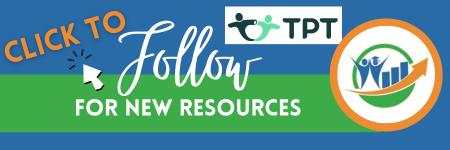Behavior Management Strategies That Teachers Can Use
- Dianne McKinley
- Jul 29, 2017
- 4 min read
Updated: Nov 17
One of the enormous challenges of being a teacher is dealing with student misbehavior. It affects not only the teacher and the student involved, but the whole class as well. The goal of behavior management is to promote a positive classroom environment conducive to learning for all students. Provided below is a list of behavior management strategies that teachers can use to keep the classroom in order.

Classroom management and relationship building
Classroom management is of particular importance in the middle-grade years when the students are likely to experience reduced academic motivation and self-esteem. One important aspect of effective classroom management is the quality of relationships between teachers and students.
Teachers should have a mindset of developing the “whole person” to help students develop positive and socially appropriate behaviors. Effective teacher-student relationships are not entirely dependent on the teacher’s personality or whether the students like the teacher. Instead, relationships are characterized by the strategies, behaviors, and attitudes demonstrated by the teacher. Establishing clear learning goals and modeling equitable, positive behaviors are more important.
Teachers can employ different strategies with various types of students. Effective classroom management includes being able to identify high-needs students and having a repertoire of techniques for meeting those needs.
Strong Teacher-Student Relationships
It is much easier to manage student behavior if teachers have strong relationships with their students. You can build such relationships by being firm yet caring while pressing your students to do their best at school. Teachers who have high-quality relationships with students are less likely to experience discipline problems, rule violations, and other incidents of student misbehavior.
An important aspect of developing relationships is knowing and understanding the student. Many students have fears, doubts, insecurities, and angst. They may hide or disguise these negative feelings at first, but can later manifest as misbehavior.
The “Stare”
It’s surprising how a simple gesture like the “stare” actually works. The purpose of the stare is to convey to the misbehaving student that what he or she is doing is inappropriate while causing as little disruption to the lesson as possible.
To have full impact, a teacher can stop speaking or pause mid-sentence. It will catch the attention of the whole class, especially the misbehaving student (the recipient of the stare). However, it’s important to do this mildly and objectively, rather than doing it an angry or demeaning way.
Rules
A teacher should set rules inside the classroom. But it’s important to explain the reason behind the rules, limit the number of rules, and frame the rules in a positive way. For instance, instead of “No Running”, write the rule as, “Walk in the school building.” These 3-5 rules need to be posted where students can see them. When redirecting a student’s misbehavior, refer to the posted rules and ask the student to identify which rule he/she is breaking. When students know what’s expected of them in terms of behavior, it will be easier for the teacher to instill order and discipline inside the classroom.
Nip Minor Problems in the Bud
Most incidents of student misbehavior can be dealt with fairly quickly and easily. Often, minor infringements can be corrected on-the-spot. Aside from the “stare,” other things that a teacher can do are moving closer to the student or group causing the disruption and reminding the students about classroom rules. When teachers move throughout the classroom and use proximity, they can keep minor infractions from becoming larger problems.
Consequences of Misbehavior
Students must realize that there are consequences for misbehavior. Many times, consequences are light, but in some cases, there is a need for a weightier consequence. While this should be a last resort, repetitive or serious misbehavior may require a stronger corrective action.
More serious infractions can include time-outs, detentions, or an office referral if the situation cannot be handled in the classroom. Whatever consequence you use, it should be appropriate to the misbehavior that was committed and cause as little classroom interruption as possible. In order to learn, students need to be in the classroom.
Individual Reinforcement
Reinforcement involves “rewarding” desirable behavior and correcting misbehavior. The teacher can give a reward or consequence to individual students. Examples of rewards include positive, specific verbal feedback, privileges, and good notes home. On the other hand, penalties can include detention, a visit to the office, and informing the student’s parents.
Emotional Objectivity
Student misbehavior can be challenging to deal with. It is important that a teacher remains calm. By being calm, the problem can be resolved rationally and quickly, so the teacher can focus on the main task – teaching. As much as possible, don’t take things personally.
Some students have personal or family struggles, and they may bring their anger or frustrations to school. If you have the chance, talk to the student privately to get a better understanding of the underlying problem and then figure out how you can help. Students need to have positive social interactions with teachers and fellow students. They also need meaningful participation in the school, family, and community.
Always use the least disruptive technique possible in a given situation. The goal is to be successful with that student and to keep him/her in the classroom. De-escalating a situation is a powerful skill that teachers must have in order to be successful with the most challenging behaviors. Do your best to keep minor infractions from escalating into a major classroom disruption.
Conclusion
Behavior management strategies help teachers to prevent or minimize class disruptions brought about by student misbehavior. Knowing how to effectively deal with the situation is important to keep things in order and increase learning inside the classroom.
INcompassing Ed provides professional development for teachers through on-site, off-site, and online PD. Our experienced and highly qualified team can help teachers, schools and districts upgrade knowledge and skills, and ultimately, improve learning and outcomes for all students.




